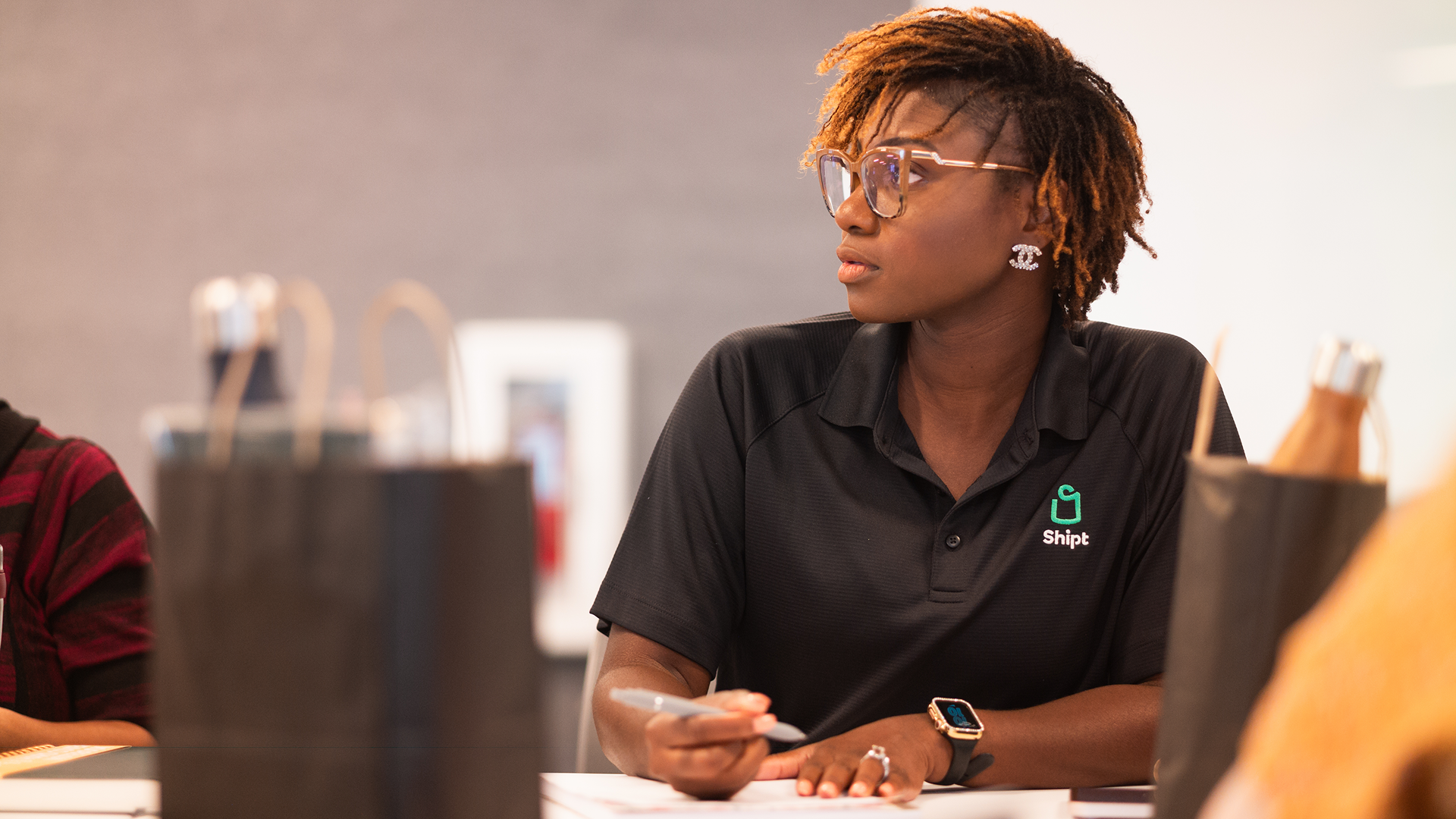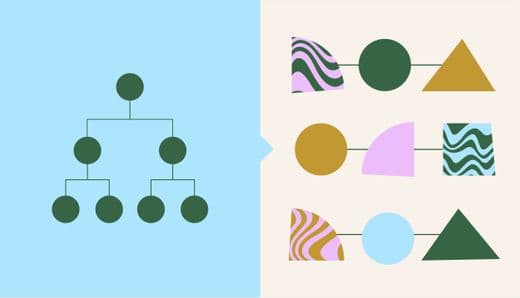Compass Staff |
Grocery-delivery had gotten faster. AI, smarter. Competition, fiercer. And right in the middle of it, Shipt — following its acquisition by Target — had to reinvent itself from the inside out. ...
This was the backdrop when Ann Thai stepped into her role as Shipt’s first-ever director of Team Member Development in May and faced her biggest challenge since joining the company in 2019. How do you help employees keep growing while everything around them is changing?
Shipt, still evolving from their early and nimble startup days, had not yet built a learning roadmap, strategy, or formal organizational structure for Team Member Development — and Thai had no prior background in learning-and-development (L&D). She was starting from scratch.
In an interview with Compass by Guild, Thai shared the lessons, strategies, and early wins that have defined her experience building an enterprise L&D function for a rapidly scaling, technology-driven same-day delivery platform (which also happens to be part of one of the largest retailers in the U.S).
While her story is specific to Shipt, Thai’s approach offers practical insight for any leader tasked with developing learning programs in real time. What follows is a case study in what it takes to launch from zero: the mindset shifts, tactical choices, and relationship-building needed to make learning stick.
Here are five valuable lessons from Thai’s experience so far.
1. Build trust before you build programs.
When Thai set out to launch Shipt’s first-ever learning function, she decided against starting with a fixed curriculum. She began with weeks of “deep listening” sessions with cross-functional leaders and their teams to surface real challenges and learning needs.
“We knew we couldn’t roll out anything generic,” Thai said. “We had to meet people where they were — and that meant starting with the stories they were telling us.”
As Thai and her team learned, employees needed help understanding and managing change. From that insight, Navigating Change — the first program under the newly launched Shipt Academy with Guild — was born. Designed as social, cohort-based learning, the program focuses on equipping employees with the tools to move through change with intention, which also happens to be a core business priority for Shipt.
Early results suggest the approach is working. Shipt’s Navigating Change program was optional, and still more than 80% of those who enrolled were actively engaged (meaning they started the program and invested at least 10 minutes in the learning content). Participants also exceeded expectations by leaving nearly three times more comments than required for completion, highlighting both an eagerness to learn and a high level of peer-to-peer interaction. These findings underscore employees’ curiosity and motivation, as well as the program’s ability to foster collaborative learning.

2. Design for the jobs to be done instead of the job title.
Another important decision Thai made early on was to de-emphasize formal roles and titles in the learning design itself. Her team built programs around what people actually do — like leading through ambiguity, coaching others, or making decisions with limited information — with each program tailored to Shipt’s culture and strategic and business goals.
As Thai explained, this approach helped boost engagement across cohorts of individual contributors and people managers alike.
“People are more likely to engage with learning when it feels practical, timely, and personal,” Thai said. “That’s especially true in a remote environment.”
Shipt’s Ann Thai on resilience:
Compass: How do you define resilience in the context of your workforce?
Thai: For me, resilience means being able to stay grounded and focused when things get hard. Change is always happening, and our people have to learn how to navigate it.
Compass: What role does L&D play in building resilience?
Thai: Our role in Learning and Development is to make sure people feel supported and not alone. I believe that when people feel safe, equipped, and knowledgeable, they’re more likely to adapt, grow, and be innovative — and help each other do the same.
Compass: How are you building long-term support for change and resilience?
Thai: In 2025, our focus is on navigating change. Looking ahead to 2026, we’ll help team members not only navigate but also own their role as change unfolds. We’re launching an internal initiative designed to help teams apply the frameworks from our courses to real business scenarios — turning learning into action.
Compass: What early signals have you seen from this approach?
Thai: We’re already seeing conversations flow more openly. People are building better relationships across the business. Being a hybrid workforce, we’ve needed ways to stay connected — and this has helped people show up with more confidence.”
3. Develop shared language for what you’re trying to achieve.
As she got to work, Thai realized something critical: With all this change happening all around the organization, there was no real shared language — or, as she put it, a “common framework” — for how to deal with change. Teams were adapting in different ways, often drawing from past experiences or their own personal instincts, but the lack of consistency made it harder to build collective resilience. Before Shipt team members could lead change, they needed a way to talk about change.
“Change management has been a really hot topic for us,” Thai shared. “We grew very quickly during COVID. We had a lot of leadership coming in from different organizations, and at the time, I don’t think we had ever really set the common frameworks that we could use as an organization when it came to change.”
Drawing on her background in marketing, Thai created frameworks for talking about change in a shared, consistent, actionable way, starting with the company’s first foundational Academy program with Guild, Navigating Change.
But Thai was quick to point out that frameworks are only one part of the equation. Emotional support matters, too.
“Our role as learning and development is to really make sure that [employees] feel supported and not alone,” Thai said. That belief is shaping what’s next: a 2026 plan to launch an internal initiative that gives every team member at Shipt the opportunity to build resilience to change, understand their role in adapting to evolving business needs, and confidently manage their responsibilities as priorities shift.
For Thai, change is something people can learn to lead when they have the tools, trust, time — and shared language — to do it well.
Resilience is emerging as one of the most meaningful signals of long-term business performance. According to proprietary Guild research, only 36% of organizations report meeting resilience-related KPIs. Of those that do, 90% credit their L&D investments as a contributing factor.
4. Build fast, test early, and learn in real time.
As the first leader of a brand-new learning function at Shipt, Thai did not have the luxury of time, nor could she revisit old playbooks. She had to embrace a scrappy ethos of responding quickly to business needs and treating every program as an opportunity to test, learn, and improve.
Given that Shipt is a fast-paced company, Thai often receives last-minute requests for learning support — like designing a session in three weeks for an onsite. Her answer is almost always yes: “It may not be perfect by my standards, but it’s usually received really well.” The idea is to pilot, test with small teams of learners, and refine as you go.
“You get better outcomes this way,” Thai said. “The perfect rollout is often the enemy of the good.”
In other words, if you focus too much on getting every detail exactly right, you risk delaying valuable work that could already be delivering impact, missing opportunities to learn from real-world feedback, or even losing momentum while chasing perfection.
More than three-quarters of Navigating Change’s active learners completed 100% of the program.
Positive results with a test-and-learn approach have helped build trust with business leaders and lay the groundwork for broader impact. What starts as a tactical solution often becomes the seed for something larger. In fact, Shipt is already expanding its Shipt Academy to support additional programs and learner audiences, using early pilots as a foundation for scale. Programs like Leadership as a Practice and Critical Thinking are in development, with plans to embed learning more deeply into team development and change enablement.
But Thai’s desired outcome is relevance as much as speed. Thai’s team focuses on “designing programs that work in real life — not just in theory,” and that includes identifying one core behavior they want learners to walk away with.
“If participants can leave with one learning that sticks, it’s a win,” she said.

5. Always keep evolving (especially the learning model).
Before launching its Academy cohort-based programs with Guild, Shipt had laid important groundwork through flexible, asynchronous, and credentialed learning programs that enabled employees to engage with learning on their own time, like Guild Grow. Guild Grow has become one of the most popular offerings of Shipt’s overall benefit package. These offerings gave Shipt employees across locations and job functions access to relevant development opportunities on their own schedules and at their own pace. It was a critical early move for a fast-moving company where learning needed to be accessible, easy to navigate, and closely aligned to evolving business priorities.
That model proved especially effective in helping small teams engage with learning quickly, without waiting on perfect rollout conditions and taking into account the bandwidth of Thai’s small but mighty team. Shipt’s learning team could stay agile, consistently refresh program offerings, and ensure high relevance through continuous updates to the learning catalog.
As the company’s Team Member Development function matured, so did its strategy. In addition to doubling down on their investment in asynchronous, credentialed learning opportunities to meet employee demand, Thai and her team began introducing structured, cohort-based experiences focused on critical capabilities. Programs like Navigating Change are designed to move fast, scale quickly, and create real behavioral shifts. Delivered in three-week modules, the change-management course reached both individual contributors and people leaders, giving them shared language and tools to lead through disruption. More than three-quarters of Navigating Change’s active learners completed 100% of the program.
This evolution — from individual to collective learning, from flexible access to structured capability-building — has enabled Shipt to meet urgent organizational needs with speed, confidence, and consistency.



